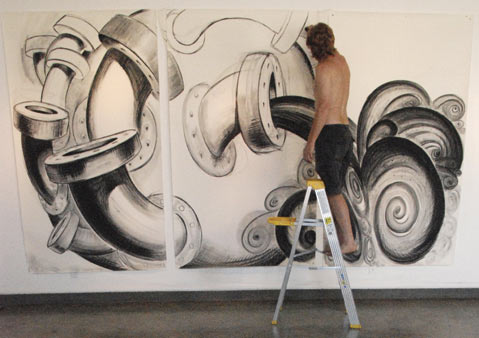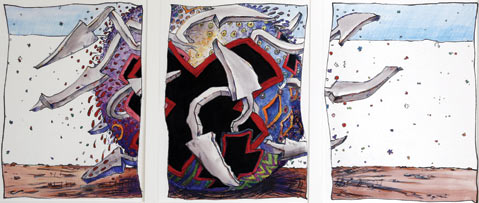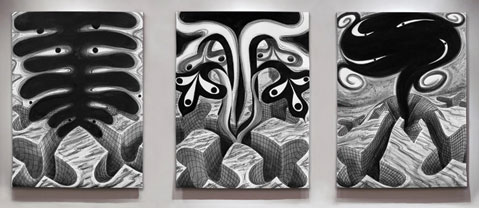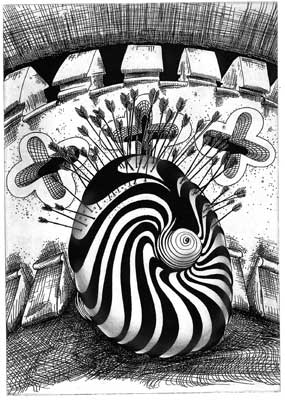Colin Fraser Gray
At SBCC's Atkinson Gallery. Shows through October 31.

Throughout the course of his 30-year career, Colin Fraser Gray has never backed down from instinct in his art making. Gray’s enthusiasm echoes the vernacular of neo-expressionist artists like Anselm Kiefer and Philip Guston who rendered representational objects with a dynamic and emotional vigor. In their use of symbolic imagery, these artists had attitudes of irreverence and a penchant for the unconventional that often became political.

Some may remember the controversy surrounding Gray’s “sculpture W” as part of a public art installation on State Street where the artist’s symbolic intent fell prey to misinterpretation. It is precisely this dedication to the unrestrained that makes Gray’s work so pertinent and honest. Like Kiefer, Gray believes that processing life into aesthetic output inevitably touches taboos and raises debate.

A case in point is Gray’s Pipeline series, featured in the current show, which arose from a trip to Dubai and an interest in the oil production industry. The series highlights tangles of cartoonish pipes spewing petroleum. In “Seventy Six,” these pipelines grow out of an organic, bulbous form-colored in red, white, and blue-that looks as if it might burst at any moment. The anticipation of movement in these drawings, combined with references to the oil industry and America’s dependence on it, makes for dynamic images with a clearly distilled message.

At the same time that Gray’s subject matter and street style of drawing borders on the absurd and frivolous, his work displays monumentality both in scale and in connotation. Gray originally trained as a sculptor, and even in two dimensions his works exaggerate the inferred third dimension, their robust forms and shapes exhibiting an architectural weightiness. This friction is nowhere better exemplified than in Unknown Land, a series of three tapestries created by contemporary tapestry maker and painter John Nava using Gray’s designs. The wall-sized piece, hung in triptych formation, is faithful to Gray’s original drawings down to the last details. In this format, Gray’s work takes on an even more iconographic status, even while it taunts the tradition of tapestry as a storytelling. medium



